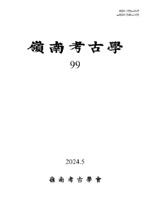남강유역 취락의 변천 과정과 일상적인 관계를 사회·문화적 맥락 속에서 살펴보고자 한다. 여기서 취락의일상적인 관계라 함은 같은 생활문화권1)에 분포하는 취락 간 관계를 말한다. 삼국시대 남강유역 취락의 입지, 구조를 분석하여 4개 타입의 취락으로 구분하였으며, A타입으로 갈수록 규모와 복합도가 높다. 남강유역의 타입별 취락들은 다시 4단계로 시기적 구분이 가능하다. Ⅰ단계는 중류역에 취락이 집중되며 그 구조가 불확실하다. 이는 청동기시대 말, 남강유역에 발생했던 대규모 범람이후 오랜 공백기를 깨고 들어선 취락들로 취락 구조가 정연하지 않은 것으로 생각된다. Ⅱ단계는 농경 취락이 본격적으로 확산하기 시작한다. 소유역별 대규모 취락(A타입 취락)인 상류의 하촌- 갈전리 취락군, 하류의 평거동 취락군을 중심으로 B·C·D 타입 취락들이 밀집한다. 이 취락군들은 중류를 중심으로 대칭적으로 분포하고 있어 상-하류 간 생활권이 양분되어 있었던 것으로 생각된다. Ⅲ단계에 들어서면 취락 경관이 급격하게 변화한다. 취락의 수가 급감하며 고분 축조가 급증하게 된다. 상- 하류 간 대규모 취락이 존속하고 있어, 생활권 역시 상-하류로 양분되었던 것으로 생각된다. 또한 소가야계 토기의 출토양상을 바탕으로, 남강유역 전반에 걸쳐 소가야의 영향이 예상된다. Ⅳ단계에는 상-하류 간 생활문화권의 뚜렷한 분화가 이루어지기 시작한다. 하류는 대규모 취락이 소멸하며소가야의 영향이 지속된다. 반면 상류에서는 다양한 문화가 병존한다. 이는 상류지역의 ‘접경지’적 성격이 극대화 된 결과로, 교통의 길목에 위치한 상류역 취락들에 다양한 문화가 유입, 병존 하였던 것으로 생각된다. 따라서 상-하류는 Ⅳ단계에서 중류를 기점으로 분화하여, 서로 다른 생활문화권을 가졌던 것으로 판단된다. 남강유역은 가야의 탁월한 중심부가 아니라 주변부에 해당한다. 따라서 여타 가야의 발전양상과는 달리 Ⅰ -Ⅱ단계에는 대~소규모의 일반 농경취락으로 영위되다가, Ⅲ단계에 들어 농경 취락 전반에 소가야의 영향이 확인된다. Ⅳ단계에 들어서면 생산시설, 방어시설의 확인 등의 변화가 나타난다. 특히 상류역은 접경지적 성격이 강화되어 다양한 문화가 유입되고, 각 상-하류간 생활문화권이 분화되었던 것으로 생각된다.
This study aims to examine the evolution and everyday relations of settlements in the Nam River basin within a socio-cultural context. Here, the everyday relations of settlements refer to the relationships between settlements distributed within the same cultural sphere. The location and structure of settlements in the Nam River basin during the Three Kingdoms Period were analyzed and classified into four types, with Type A being the largest and most complex. The settlements in the Nam River basin can be temporally divided into four phases based on their types. Phase I is characterized by settlements concentrated in the midstream area, with uncertain structures. Phase II marks the beginning of the widespread expansion of agricultural settlements. Large settlements (Type A), such as the Hachon-Galjeonri settlement group in the upstream and the Pyeonggeodong settlement group in the downstream, are surrounded by densely populated Type B, C, and D settlements. Entering Phase III, the settlement landscape undergoes rapid changes. The number of settlements decreases sharply, and the construction of tombs increases significantly. Following Phase II, the existence of large settlements in both the upstream and downstream continues, suggesting that the divided cultural spheres between the upstream and downstream persisted. In Phase IV, a clear differentiation begins to emerge between the cultural spheres of the upstream and downstream. In the downstream, large settlements disappear, while the influence of Gaya continues. Conversely, in the upstream, various cultures coexist. This is a result of the maximization of the ‘borderland’ nature of the upper regions, where the settlements located at the crossroads of transportation routes experienced the influx and coexistence of various cultures. Therefore, it is judged that the upstream and downstream had completely different cultural spheres in Phase IV, diverging around the midstream area.
Ⅰ. 머리말
Ⅱ. 취락의 입지 분류와 시간성 검토
Ⅲ. 취락의 구조와 유형
Ⅳ. 삼국시대 남강유역 취락의 변천과 특성
Ⅴ. 맺음말
(0)
(0)
